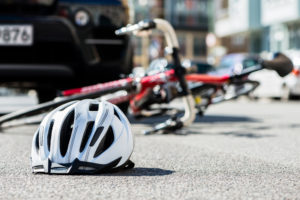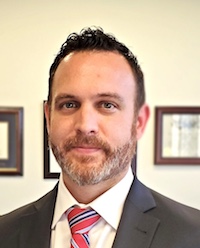According to the executive director of the Silicon Valley Bike Coalition, when people are asked why they don’t ride their bikes for transportation or enjoyment in San Jose, the answer is that it’s not a safe place to ride. In recent years, city leaders have embarked on a mission to make roads safer for bicyclists and pedestrians. However, in five months, five bicyclists were among the 33 fatalities in San Jose, following a year in which eight bicyclists died in traffic-related accidents.
Many of the accidents involving bicyclists in San Jose are caused by the negligent operators of other types of vehicles on the roadway, such as cars and trucks. If you’ve been injured or have lost a loved one due to a bicycle accident, an experienced San Jose bicycle accident lawyer from Galine, Frye, Fitting & Frangos can evaluate your case for free, answer the legal questions you have, and help you understand the important role that our San Jose personal injury lawyers can play in assisting you as you seek compensation for the financial and psychological impacts of your injury.
HOW DO NEGLIGENT DRIVERS CAUSE BICYCLE ACCIDENTS IN SAN JOSE?
San Jose’s $25 million investment in bicycle and pedestrian safety has involved building 400 miles of on-street bikeways. Additionally, the plan involves the broader use of protected bike lanes, with plastic or concrete barriers, to provide separation between bicyclists and motorized traffic. Unfortunately, despite this investment, funding is not available to completely change street designs at intersections where these accidents frequently occur, and it won’t make the traffic slow down either.
The 1,500 bicycle accidents in San Jose over five years make the city the most dangerous city in Santa Clara County for riders. Those 1,500 accidents involved more cyclist injuries, serious injuries, and deaths than the other top five cities combined. The most dangerous location for bicyclists in San Jose involves the downtown area, including the intersections of South Market and San Fernando Street, and East Santa Clara and South Fourth Street. Here is a look at how these accidents often occur.
1. DISTRACTED DRIVING
With the rise in smartphone use, distracted driving has become one of the most common causes of all types of severe and fatal traffic accidents, including bicycle accidents.
While the use of a smartphone to text or email is of particular concern to traffic safety experts, driver distractions can include anything that:
- It causes the driver to take their hands from the wheel, a manual distraction that includes adjusting stereo or vehicle controls, eating, drinking, or smoking.
- Causes the driver to avert their eyes from watching the roadway, such as attending to kids and pets in the back seat, looking for an item the driver dropped on the floor, or even watching other people or cars instead of attending to traffic. These are known as visual distractions.
- Causes the driver’s mind to wander from driving safely, such as thinking about work, listening to the radio, or daydreaming.
2. FAILURE TO PROVIDE THE BICYCLIST AMPLE SPACE
Contrary to popular belief by drivers of motorized vehicles in California, bicyclists have a right to use the road and expect the same courtesy as any other type of roadway user. California requires bicyclists to ride in a bike lane and along the far right edge of the roadway if no lane is available. They have the right to “take the lane” if a bike lane isn’t available.
California is one of 24 states that require motorists to provide at least three feet of buffer between their vehicle and a bicycle when passing. If that amount of space is unavailable, then the driver of the car or truck must slow down and follow at a safe distance until there is adequate room to pass with a three-foot buffer.
3. SPEEDING
Speeding is another major source of injury and fatal crashes involving all vehicle types on California roadways.
Speeding drivers are an extreme risk for bicyclists for a variety of reasons, including:
- Excess speed deprives the driver of the time to perceive a hazard, such as a bicycle, on the roadway and respond by braking
- Excess speed increases the amount of work the vehicle’s brakes will do to pull its weight to a complete stop, resulting in the vehicle traveling farther after the driver braked in response to a hazard.
- The collision force between a speeding vehicle and a bicycle will be more severe, resulting in more extreme injuries or death for a rider not protected by the steel frame, seat belts, and airbags provided to motor vehicle occupants.
- The unexpected speed of the vehicle makes it difficult for bicyclists and other roadway users to determine a safe gap in traffic to enter or cross a travel lane.
4. TAILGATING
As noted, when a driver does not have sufficient space to provide a three-foot buffer for a bicyclist while passing them, they must slow down and follow the bicycle until there is sufficient room to pass. However, this instruction does not involve the driver tailgating the bicycle. Tailgating refers to one vehicle following another vehicle so closely that it will have little time to react if the operator of the lead vehicle suddenly slows or stops.
Rear-ending a bicycle can be deadly for the rider, as it will generally propel their body forward off the bicycle, where they can collide with the ground or other objects.
5. LEFT TURNS
Left-turning drivers are one of the most dangerous aspects of bicycling on the streets of San Jose. When a driver attempts to make a left turn at an intersection that does not feature a solid green arrow, the driver must yield the right-of-way to approaching travel lanes where traffic is going straight through the intersections.
However, due to distraction or inattentional blindness, the driver often fails to check for bicyclists who are also going straight through the intersection, causing them to either pull into the bicyclist’s path while completing their turn or strike the bicyclist.
Inattentional blindness refers to how the brain processes information in chaotic situations, such as busy intersections in downtown San Jose by focusing on the largest hazards—such as approaching cars and trucks—while failing to notice smaller, less dangerous features of the scene, such as bicyclists and pedestrians. Inattentional blindness is commonly the reason why drivers state after a bicycle accident occurred that, they didn’t even see the bicycle coming.
6. FAILURE TO YIELD THE RIGHT-OF-WAY
Failure to yield the right-of-way is one of the most common causes of accidents occurring in intersections. All drivers must yield in certain circumstances, such as at red lights, stop signs, crosswalks, or railroad tracks.
Drivers often misunderstand a bicyclist’s position and location, expecting riders to take a pedestrian’s position of using the sidewalk and traveling facing the traffic flow. In reality, bicyclists must protect pedestrians by using the roadway, not the sidewalk, and observing most of the same road rules expected by motorized vehicles.
7. IMPAIRED DRIVING
Consuming alcohol or drugs before operating a motor vehicle can create deficits in a driver’s skills to drive safely and avoid causing harm to other roadway users.
These deficits include:
- The inability to control one’s speed
- The inability to track a moving target, such as a bicyclist crossing an intersection ahead
- Difficulty maintaining lane position poses a significant risk of bicyclists getting knocked off their bike
- Difficulty making good driving decisions
BICYCLE ACCIDENTS CAN RESULT IN SEVERE INJURIES
California only requires the use of bicycle helmets for those under 18, meaning many of the riders who are involved in accidents on San Jose roadways suffer traumatic brain injuries due to the accident. Traumatic brain injuries are considered catastrophic due to the high likelihood of permanent deficits arising from the injury that will impair the injured person’s ability to earn an income.

Other types of injuries that commonly occur in San Jose bicycle accidents include:
- Spinal cord injuries, which are also considered catastrophic
- Broken bones, including the bones in the legs that can be in the impact area of the collision, and broken arms resulting from the body’s instinctive urge to outstretch the arms to catch oneself from a fall
- Internal injuries resulting from the collision with other vehicles or objects in the roadway
- Severe cuts and lacerations
- Damage to the spinal vertebrae and discs
Bicycle accidents can be violent, highly-injurious scenes, resulting in injuries that cause the sufferer to miss time from work or school, resulting in lost earning capacity, and impacting nearly all parts of the sufferer’s life.
THE PROCESS OF SEEKING COMPENSATION AFTER A BICYCLE ACCIDENT INJURY IN SAN JOSE
When a San Jose bicycle accident results in serious injury, the injured party (or their parents, if the victim was a child) can seek compensation for their injury’s expenses and psychological impacts through the personal injury claims process. The family members of an individual killed due to a bicycle accident can seek compensation for the expenses and psychological impacts of their loved one’s death through the wrongful death claims process. Both cases involve filing a claim against the negligent driver’s auto liability insurance policy.
When the at-fault party’s insurance provider receives the claim, they assign the case to a claims adjuster. The adjuster is tasked with evaluating the claim, determining if the insured was liable for the accident, and—if they were liable—determining how much is owed to the claimant. However, it is important to point out that the claims adjuster is viewing the claim through the lens of an insurance company employee protecting their employer’s bottom line.
The claims adjuster can either accept or deny the claim. They can also offer to settle the claim out of court, generally for less than its established value. An experienced attorney can manage communication with the insurance provider and negotiate to get them to increase their offer to the claimant.
If the insurance provider fails to compensate the claim through an outright payment or a negotiated settlement, it can be filed as a personal injury or wrongful death lawsuit. Both types of claims involve a two-year statute of limitations.
This is an extremely important deadline, as allowing the statute of limitations to expire without filing your lawsuit will generally result in losing your ability to use the court process when seeking compensation for your injury. Without the court process available as a legal consequence, if the at-fault party’s insurance provider fails to pay the claim, most insurance companies will refuse to settle the claim because they no longer face legal ramifications for not paying it.
An experienced personal injury or wrongful death lawyer will manage the process’s timing to ensure there is time to file a claim in court. They also provide several other services, including assistance with gathering the evidence and witness testimony needed to prove the claim, presenting the claim in court if it is not settled before the trial date arrives, and collecting the claimant’s compensation from a negotiated settlement or court award.
IF A BICYCLE ACCIDENT IN SAN JOSE INJURED YOU, WE CAN HELP

The experienced legal team at Galine, Frye, Fitting & Frangos, LLP has been assisting the injured in the Bay area for many years and has developed a deep understanding during that time of the type of compensation needed after a serious injury or loss, as well as the type of information and services that our clients need in order obtain the compensation they need.
Let our experienced bicycle accident lawyer help you understand the personal injury claims process and the legal options available for your claim. For your free case evaluation, contact Galine, Frye, Fitting & Frangos online or call (408) 317-7393.